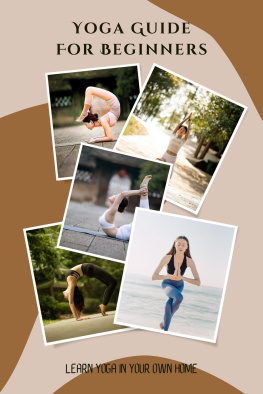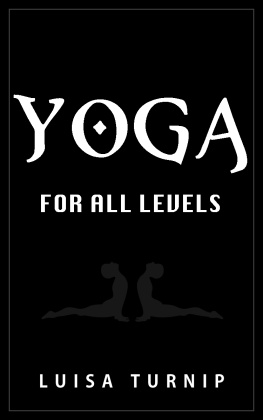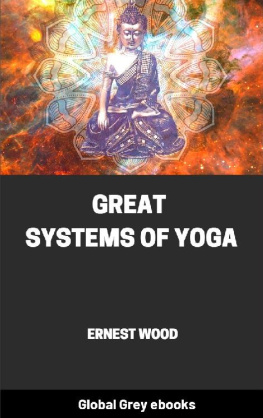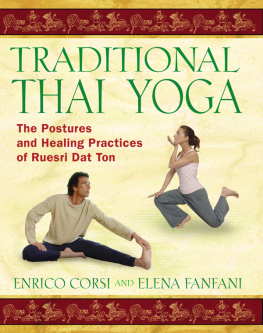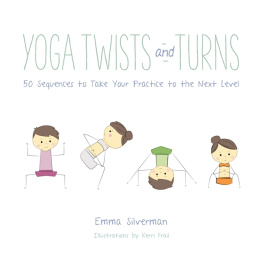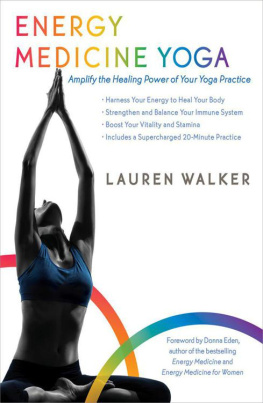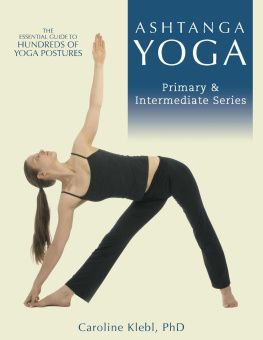Copyright
Meridian Systems Yoga Published by MSY Publications 2015 Santa Fe, New Mexico
Lee L. Herrera, 2015. Ebook Lee L. Herrera, 2019
All rights reserved. No part of this book may be reproduced, stored in a retrieval system, or transmitted, in any form or by any means, electronic, mechanical, photocopying, recording, or otherwise, without the written permission of the author.
Printed in the United States of America by CreateSpace
Cover design: Acacia Carr
Interior design (eBook): Timothy Falb
Models:
Ann Mauzy
Deedee Jansen
Lee Herrera
Robert Bookwalter
Illustrations by Samara Reigh
PREFACE
This book is the outcome of twenty years of personal yoga practice and of receiving acupuncture treatments. In the summer of 2007, I decided to try acupuncture for the first time. A new alternative medicine clinic opened up a few blocks away from my apartment at the time in Seattle. The clinic director, Teri Adolfo, stood outside and handed out flyers with the clinics various services. I was curious and called the next day to schedule an appointment. I arrived straight after work, tired and a feeling a little stressed. I knew nothing about acupuncture or Chinese medicine and didnt know what to expect. Teri took my pulses after I lay down on the treatment table. She then took out a box of acupuncture needles and inserted them in specific points on my body. Almost instantly I started feeling a very pleasant flow of energy. I later learned that it was Qi that was being stimulated within my meridians. After forty-five minutes of treatment both the tiredness and the stress completely went away. Instead, I felt relaxed and peaceful. I was very fascinated by the treatment, so I scheduled another one for the following week. The dramatic change in my overall emotional well-being repeated itself once again, and I began receiving two acupuncture treatments per month. I also started wondering how acupuncture actually worked. I remember asking myself how a few little needles stuck in my upper arm could alter the way I felt. I also wondered if maybe yoga asanas (postures) that stimulate the same anatomical region could bring forth a similar affect.
In the next few months, I read a couple of introductory acupuncture and Chinese Medicine books and I bought meridian charts. I then started to design a yoga practice according to the location of the meridians in my body. Teri diagnosed me with Kidney Qi deficiency and Lung Qi deficiency. I therefore practiced yoga asanas that stimulated the anatomical regions where those meridians are located (three arm yin, anterior thorax, & three leg yin meridian groups). To my amazement, both the physical and emotional symptoms related to those meridians began to improve. I was more energized and I didnt stress so much at work. Instead, I was much more accepting and was able to remain calm and happy throughout the day.
In the following months I made another important discovery. I realized that basic yoga asanas stimulate Qi and remove Qi blockages within the meridians just as well as the very complex ones. Most of the asanas in this book are variations of existing yoga asanas. I made them simple so they could easily fit the needs of anyone. I soon figured that I could develop a yoga method that would be accessible to anyone who wished to enjoy the benefits of yoga, regardless of their body type, age, or fitness level.
Creating a yoga method that was totally accessible was especially important and meaningful for me. Over the years Ive heard many people complain that they could not do yoga because they were intimidated by it. I cant compete with all the other young and super flexible students in class was a common response. Others felt that they were just too old, too stiff, or just not good enough. I personally believe that yoga is a healing modality that ought to be accessible to anyone, not just a limited population of young, slender, and fit people. I also believe that the basic principles and applications of Traditional Chinese Medicine should be more widely available. Both modalities hold vast knowledge and wisdom and have an amazing potential to help people improve their overall health and well-being. They should therefore be available for everyone to practice. The goal of Meridian Systems Yoga is just that: to make yoga and Traditional Chinese Medicine accessible to everyone. It works for me, it works for many of my students, and I hope itll work for you too.
CHAPTER 1
Who is this book for?
This book is for anyone who wishes to improve his or her physical and emotional well-being through yoga in a simple and accessible practice. Meridian Systems Yoga is designed for people of all ages, body types, and fitness levelsfrom people that have never before practiced yoga to lifetime yogis. It is an interdisciplinary method that allows people to achieve physical and emotional well-being by utilizing simple elements of traditional yoga combined with Traditional Chinese Medicine (TCM). By using simple yoga asanas (poses), Meridian Systems Yoga turns both yoga and TCM into a simple, accessible, and universal practice that can easily fit the needs and ability levels of anyone. It is not necessary to be fit and flexible in order to incorporate more well-being, love, and happiness and into your life.
CHAPTER 2
What is Meridian Systems Yoga?
Meridian systems yoga uses yoga asanas to stimulate Qi flow and remove Qi blockages of particular meridian groups in the body. In Traditional Chinese Medicine (TCM), emotions are an intrinsic aspect of meridians (which will be explained at more length later in the book), thus this is a system that achieves holistic balance at the physical, emotional, and spiritual levels. This method works similarly to acupuncture and provides the means to focus ones practice on specific physical and emotional concerns.
CHAPTER 3
Acupuncture
Acupuncture works to achieve a balance between Yin and Yang and to harmonize the various organs and energies of the body. Meridian Systems Yoga also focuses on meridian balance and harmony, but with yoga asanas instead of acupuncture needles. Meridian Systems Yoga utilizes the meridians of TCM and their emotional correspondences, providing a simplification of both yoga and TCM and a deepening of their basic principles.
CHAPTER 4
Principles of TCM
This book, and TCM literature in general, often refer to the organs and meridians in singular form (e.g. the Lung meridian, Kidney Qi etc.). It is important to note that the meridians run through both sides of the body symmetrically. The meridian diagrams too illustrate the meridians as if they ran through one side of the body only. In reality, they run through both sides, as a mirror image.
A basic understanding of Traditional Chinese Medicine is necessary to understand Meridian Systems Yoga. TCM is rooted in ancient traditions and philosophies, and focuses on the individual in metaphorical terms rather than purely anatomical terms. Its system of medicine understands health via the functionality and interrelation of all the various parts of the body. When there is disharmony in the activity of the whole, emotional imbalance and ill health will arise. This interconnectedness is a defining aspect of TCM. Western medicine usually identifies pathologies with only one disease process or body part as the object of examination, and then utilizes pharmacological or surgical treatments to address this specifically. TCM, on the other hand, identifies patterns of disharmony, and uses acupuncture and herbs to bring the elements of the body, emotions, and spirit back into a state of health and harmony. This is not to disparage the wonderful and impressive aspects of Western Medicine, but merely to emphasize the differences between these two medical traditions, and to emphasis TCMs holistic perception of the body.




